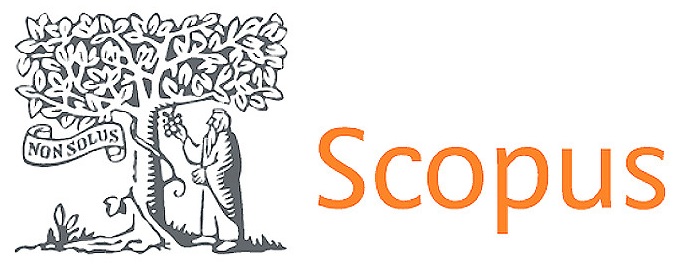Implementation of Augmented Reality in the Teaching of Computer Networks
DOI:
https://doi.org/10.56294/mw2024539Keywords:
Augmented Reality, Computer Networks, Interactive Learning, Information TechnologiesAbstract
The advancement of digital tools has significantly transformed the daily lives of undergraduate students, especially in Computer Engineering, Informatics and Mechatronics. At the Centro Universitario de la Ciénega, located in Ocotlán, Jalisco, various technologies are used in computer networking courses, whose main objective is for students to develop interconnection, configuration, and communication skills between computers through switches and routers in a specialized laboratory. This communication exhibits the implementation of Augmented Reality as a teaching methodology, integrating guided activities through a website. The activities describe step by step the practical procedures, so that students can visualize the network devices “almost” in reality through interactive photographs taken with their smartphones or tablets, as if they were physically in the laboratory. Augmented Reality is implemented by combining digital information with real situations that appear in images. The website covers the topics of the subject, which are organized in chapters, which students can access through QR codes. Students scan the QR codes and can then launch the ROAR app, which adds an augmented reality experience to the content, thereby enriching their understanding and practical learning of computer networks.
References
Cabero-Almenara J, Vázquez-Cano E, Villota-Oyarvide WR, López-Meneses E. La innovación en el aula universitaria a través de la realidad aumentada: análisis desde la perspectiva del estudiantado español y latinoamericano. Rev Electron Educare. 2021;25(3):1-17.
Basogain X, Olabe M, Espinosa K, Rouèche C, Olabe JC. Realidad aumentada en la educación: una tecnología emergente. Escuela Superior de Ingeniería de Bilbao, EHU. 2007. Disponible en: http://bit.ly/2hpZokY
Martínez PU, Piccinelli G. Realidad aumentada y la innovación educativa para el estudio del electromagnetismo con ingenieros en computación. 5to Encuentro Universitario de Mejores Prácticas de Uso de TIC. 2019. Disponible en: https://educatic.unam.mx
Rupay-Palomino RR, Coral-Ygnacio M. Un software educativo utilizando el aprendizaje basado en problemas con realidad aumentada. Rev Iberoam Tecnol Educ. 2023;34:49-58. Disponible en: http://dx.doi.org/10.24215/18509959.34.e5
Cerezo Palma EL, Muñoz León DG. Aplicación de realidad aumentada en educación [Tesis]. Universidad de Guayaquil; 2023. Disponible en: http://repositorio.ug.edu.ec/handle/redug/67269
Yerbabuena Torres A. Realidad aumentada en el proceso de enseñanza-aprendizaje de biología en el bachillerato general unificado de la Unidad Educativa. 2023.
Vidal Ledo M, Lío Alonso B, Santiago Garrido A, Muñoz Hernández A, Morales Suárez I, Toledo Fernández A. Realidad aumentada. Educ Med Super. 2017;31(2). Disponible en: https://ems.sld.cu/index.php/ems/article/view/1161/515.
Heras Lara L, Villarreal Benítez JL. La realidad aumentada: una tecnología en espera de usuarios. Rev Digit Univ. 2004;5(7). Disponible en: http://www.revista.unam.mx/vol.8/num6/art48/int48.htm.
Castro S, Guzmán B, Casado D. Las TIC en los procesos de enseñanza y aprendizaje. Laurus. 2007;13(23):213-34. Disponible en: https://www.redalyc.org/articulo.oa?id=76102311.
Cruz Pérez MA, Pozo Vinueza MA, Andino Jaramillo AF, Arias Parra AD. Las Tecnologías de la Información y la Comunicación (TIC) como forma investigativa interdisciplinaria con un enfoque intercultural para el proceso de formación de los estudiantes. E-Ciencias Inf. 2018;9(1). Disponible en: https://doi.org/10.15517/eci.v1i1.33052.
Camilloni A. Seminario de teorías del aprendizaje. Instituto Académico Pedagógico de Ciencias Humanas. Universidad de Buenos Aires (UBA); 2018. Disponible en: https://www.unvm.edu.ar/noticias/humanas/destacan-la-importancia-de-la-relacion-entre-teoria-y-practica/.
González-Sanmamed M, Estévez I, Souto-Seijo A, Muñoz-Carril P. Digital learning ecologies and professional development of university professors. Comunicar. 2020;62:9-18. Disponible en: https://doi.org/10.3916/C62-2020-01.
Duniesky Dorta Pina, Barrientos Núñez I. La realidad aumentada como recurso didáctico en la enseñanza superior. Rev Cubana Cienc Inform. 2021;15(Esp):146-64. Disponible en: https://www.redalyc.org/journal/3783/378370462010/html/.
Cevallos Jurado JC, Del Valle Saltos DB. Realidad aumentada en el aprendizaje creativo en la asignatura de matemáticas [Tesis de licenciatura]. Universidad de Guayaquil; 2022.
Letelier P, Penadés MC. Métodologías ágiles para el desarrollo de software: eXtreme Programming (XP). Univ Politécnica Valencia. 2012;17.
Published
Issue
Section
License
Copyright (c) 2024 María Guadalupe González Novoa, Horacio Gómez Rodríguez, Maricela Jiménez Rodríguez, Juan Carlos Estrada Gutiérrez, Aidé Alejandra Flores Cervantes (Author)

This work is licensed under a Creative Commons Attribution 4.0 International License.
The article is distributed under the Creative Commons Attribution 4.0 License. Unless otherwise stated, associated published material is distributed under the same licence.






